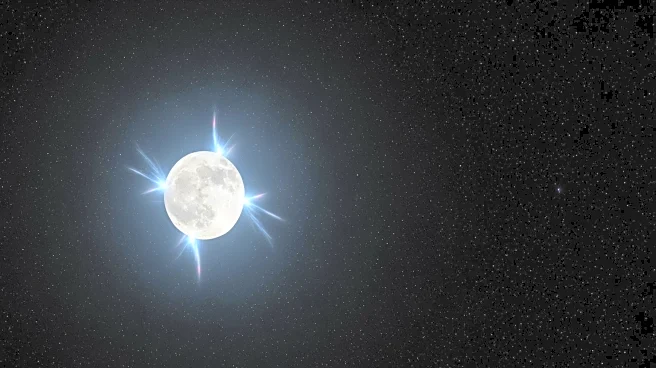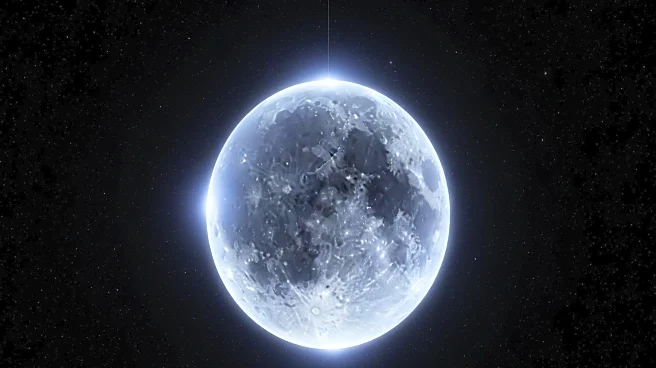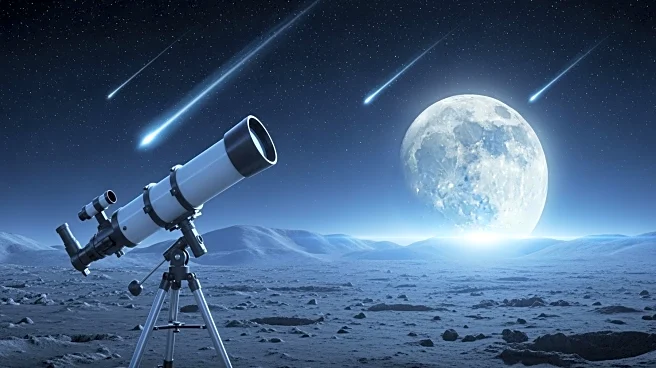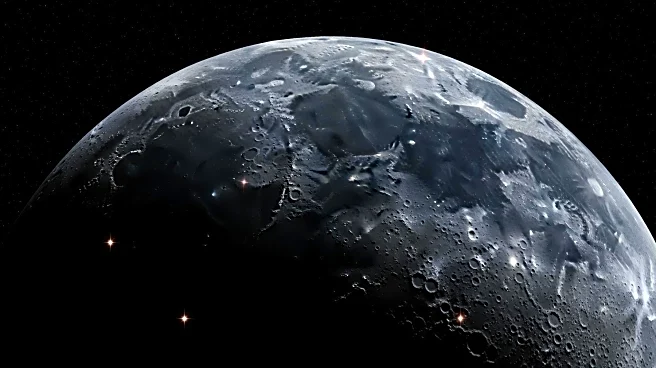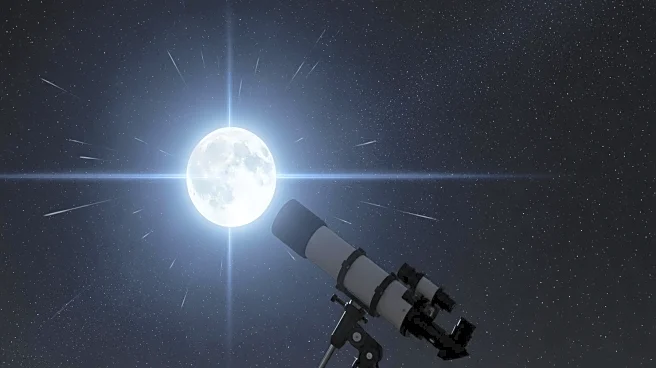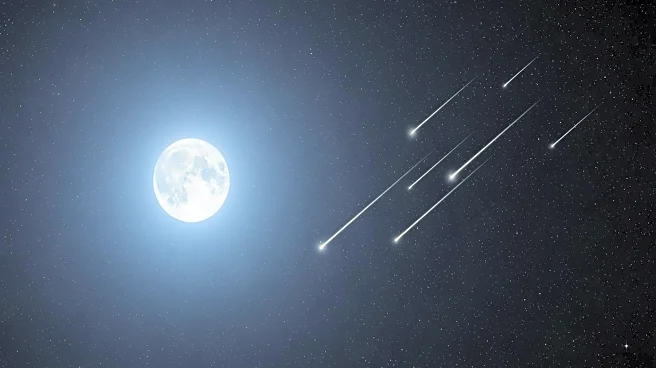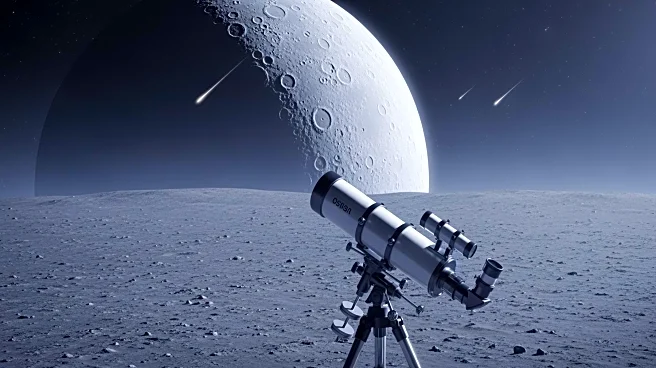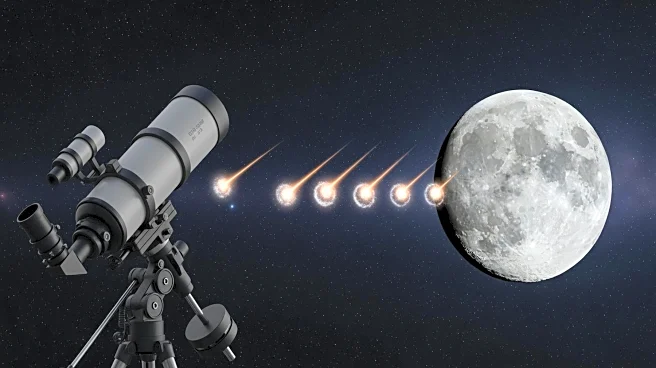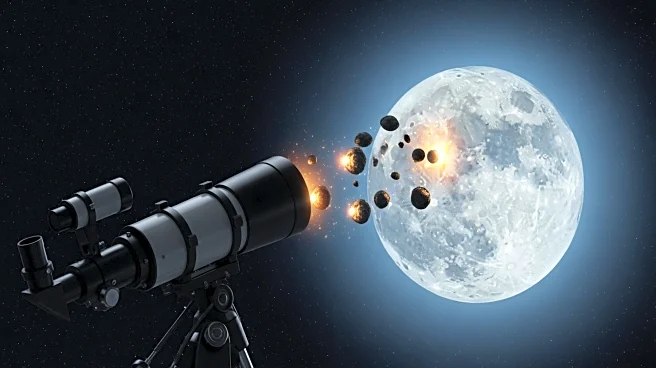What's Happening?
Astronomer Daichi Fujii from Japan's Hiratsuka City Museum has observed two mysterious flashes on the Moon's surface, sparking debate among scientists. The first flash was recorded on October 30, showing
a large, round spot briefly lighting up the Moon before fading. A second flash was observed two days later near the Moon's horizon. The leading theory suggests these bright lights were caused by space rocks hitting the Moon, linked to the Taurid meteor shower, which occurs annually in late October and early November. The Moon's lack of atmosphere means meteors are only visible when they strike its surface, creating a brief fiery flash and crater. Fujii's advanced telescopic setup has allowed him to detect almost 60 impacts on the lunar surface over 15 years.
Why It's Important?
The observation of these flashes is significant as it provides insights into the frequency and impact of meteoroid collisions on the Moon. Understanding these events can help scientists learn more about the Moon's surface and its geological history. Additionally, studying these impacts can offer clues about the behavior of meteor showers and their potential effects on Earth. The research contributes to the broader field of planetary science, enhancing knowledge about celestial bodies and their interactions with space debris. This information is crucial for future lunar exploration and potential human settlement, as it helps assess risks and develop protective measures against meteoroid impacts.
What's Next?
Further observations and analyses are expected to continue, with scientists aiming to gather more data on the frequency and characteristics of these lunar flashes. The ongoing study of meteor showers and their impact on celestial bodies will likely involve collaboration among international astronomers and space agencies. As technology advances, more sophisticated equipment may be deployed to monitor the Moon's surface, potentially leading to new discoveries. The findings could influence future lunar missions, including those planned by NASA and other space organizations, by informing safety protocols and exploration strategies.
Beyond the Headlines
The mysterious flashes on the Moon highlight the dynamic nature of celestial bodies and the constant interaction with space debris. This phenomenon underscores the importance of planetary defense and the need for continued research into space weather and its effects. The study of lunar impacts also raises questions about the preservation of the Moon's natural state versus the potential for human intervention. Ethical considerations may arise regarding the balance between scientific exploration and the protection of extraterrestrial environments.


